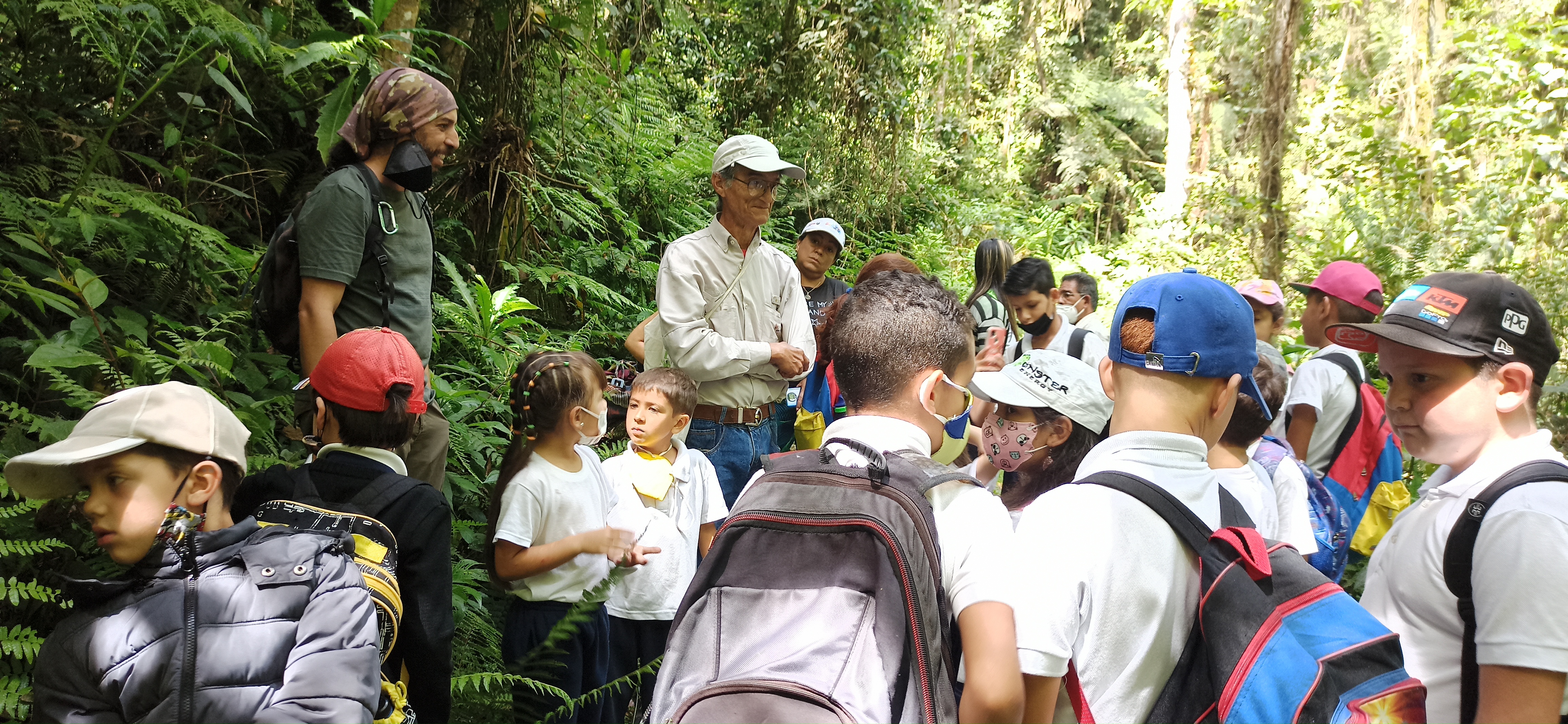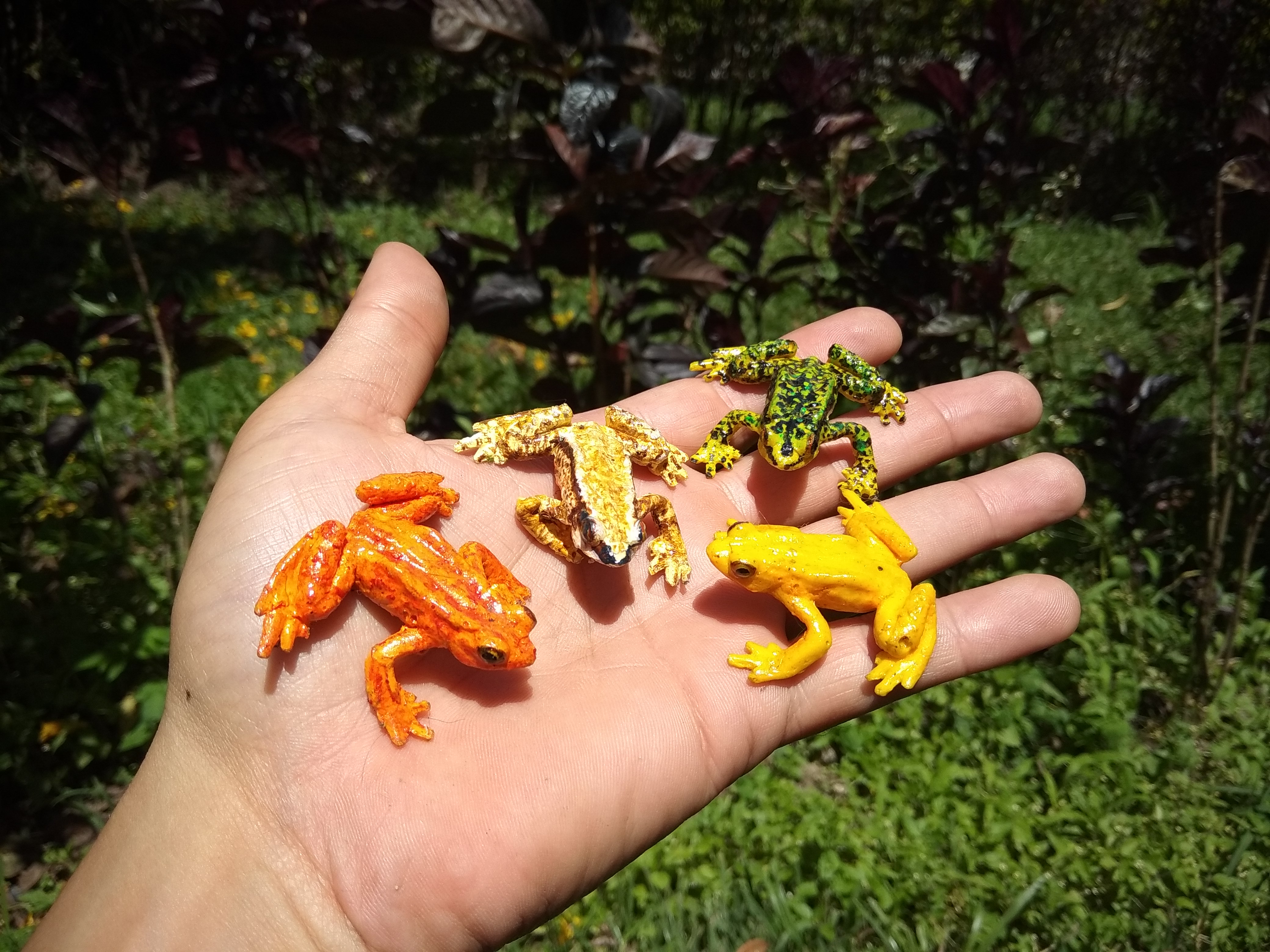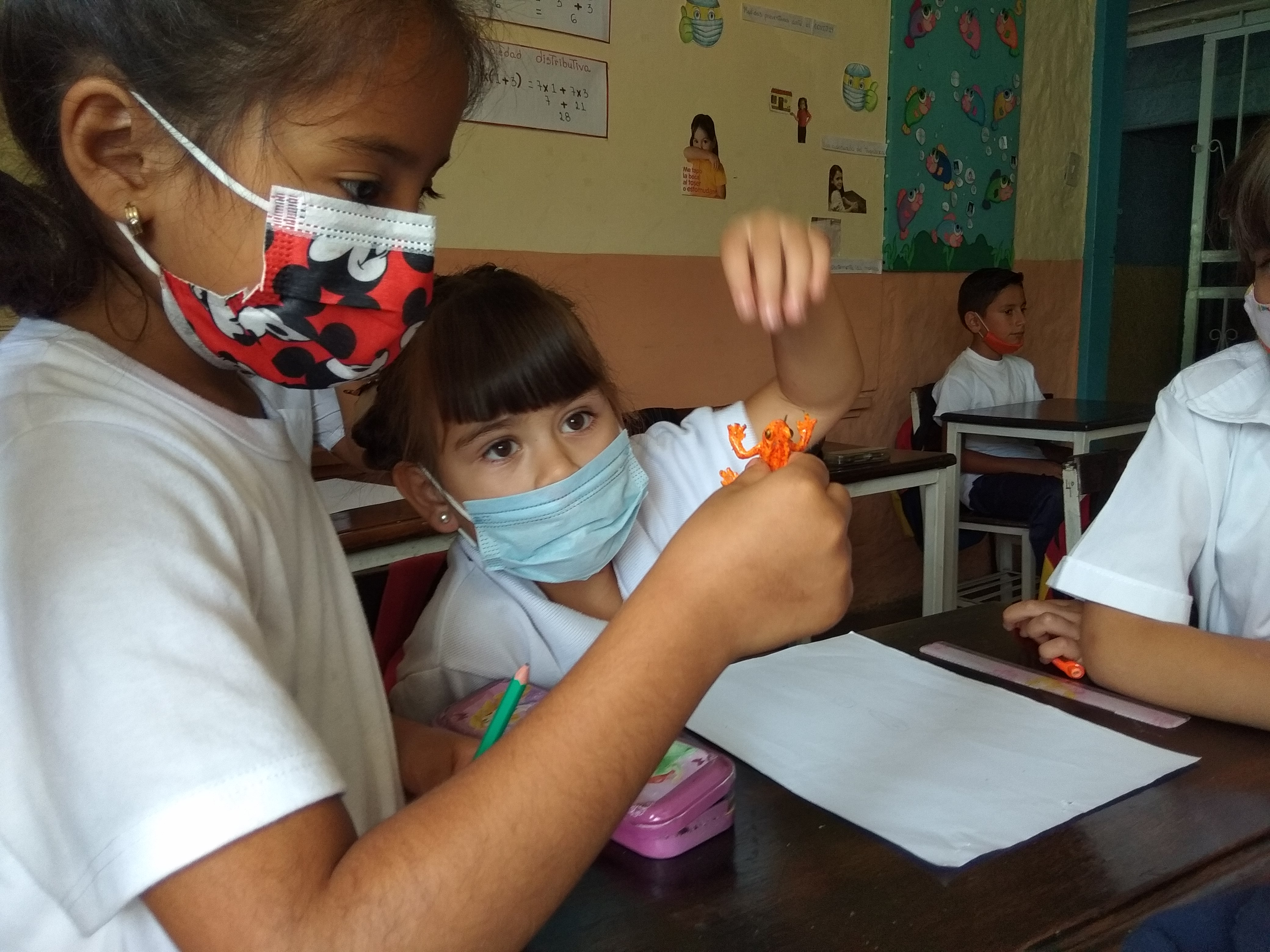July 2022 has been a very successful month for the Atelopus Venezuela Working Group. Following a lot of work, we had a double premiere of short documentaries. “In the footsteps of the yellow toad of La Carbonera” and “In search of the harlequin toad of Merida”, both created by children from the territories where these two species of the genus Atelopus (A. carbonerensis and A. oxyrhynchus) used to be found. Undoubtedly, our objectives were achieved. During the research that generated the content of the documentaries, the children experienced significant learning processes, supported by the stories of the inhabitants of those territories who know what happens there and in some cases knew the toads they were looking for.

These activities are part of an initiative that focuses on strengthening community processes for the defense of territory, water, forms of production and in general for the defense of the collective. These processes have an ecological sense and are profoundly robust in that they are based on the conservation of the conditions that allow life, as the inhabitants of these communities conceive it locally.
In our approach to the community we focus on children and youth, so we work directly in schools. In these training spaces we propose to collectively build a small audiovisual documentary in which harlequin frogs take the role of bio-indicator of the processes that occur locally and the protagonists are them: the people who are part of these cultural processes of interaction between human beings and between them and their environment.
Our team plays the role of facilitator of an audiovisual autoethnographic research process, developed by the children and young people of the community, with our accompaniment and advice. In this sense, we focus on contributing from scientific knowledge to these processes of grassroots struggle and to generate knowledge that make visible and contribute to their protection and safeguarding, with the aim of contributing to the activation of the biocultural memory that sustains them.

From this experience we have obtained so far three interesting audiovisual products, behind which there is much more than a simple documentary video.
- “El sapito de la resistencia”, developed in the town of Cuyagua, Aragua State.
- “Tras las huellas del sapito amarillo de La Carbonera”, developed in La Carbonera, Mérida State.
- “En busca del sapito arlequín de Mérida”, developed in La Mucuy Baja, Merida State.
There is still much work to be done in these fertile and little explored areas of conservation. We will continue our efforts to achieve the conditions that will allow us to continue this work in the territories of each of the 9 species of harlequin frogs described for Venezuela.
Text by Francisco Nava ([email protected]), José Luis Omaña, Adriana Castañeda, Luis Saavedra, Ángel Ulloa, Dinora Sánchez and Karen Knight, of the Atelopus Venezuela Working Group. Photos by Adriana Castañeda.
Read the Spanish version of this text here.

